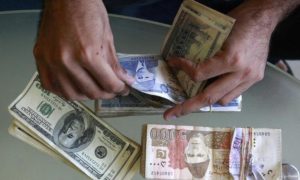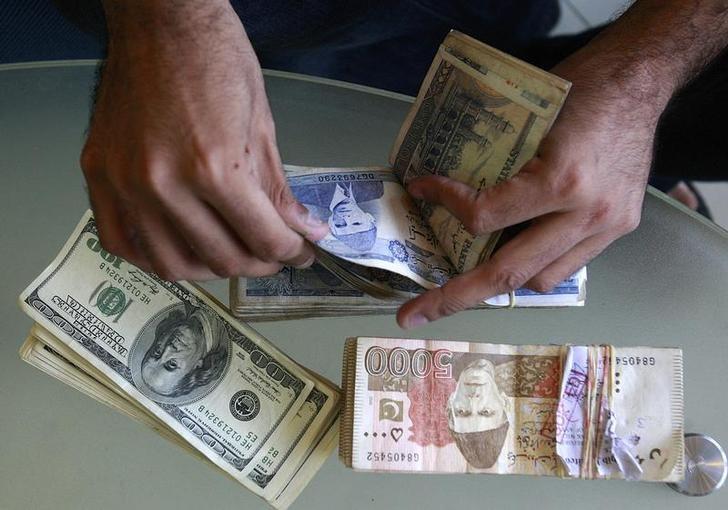Pakistan has been experiencing a rising debt every passing day. By the end of July 2017, the federal government’s domestic debt piled up to Rs15.4 trillion, half of which accounted for the short-term loans.
According to provisional statistics released by the central bank, an 11% increase in domestic debt has been recorded from July 2016-17. Domestic debt increased by Rs1.534 trillion in just one year. To top it all off, this amount is exclusive of external loans.
Comparing the debt on a monthly basis, domestic debt increased by Rs540 billion in the period between June and July. In June, the debt stood at Rs14.9 trillion which increased to Rs15.4 trillion the next month.
Also Read: Pakistan’s equity market leaves China and India behind
Short-term loans
While the huge amount of debt is not decreasing any time soon, it has made everyone question the stability of the domestic macroeconomic framework.
Short-term loans have played a major role in the increase in debt. Short-term loans alone have increased by 23.4% in one year. This increase has been the main reason of the country’s dependence on Market Treasury Bills (MTB). The government has been borrowing from the MTB and the total borrowings have piled up to Rs4.4 trillion as compared to last year when they amounted to only Rs1.3 trillion.
According to analysts, the increase in short-term loans has been due to banks’ prohibition of providing long-term loans in the wake of increasing interest rates. Moreover, the government’s dependency on the central bank for financing its deficit has also been the reason for the increase in short-term loans.
Quick Read: A 6% GDP growth prediction; WB suspension of support loans
Despite seeing all the statistics, the Ministry of Finance is not accepting the fact that the debt has increased way beyond its limits. The Ministry of Finance has been disagreeing on the fact and yet, it has changed the definition of public debt twice through the Finance Act. This shows that the government has failed to implement its second Medium Term Debt Management Strategy 2016-19 which aimed at increasing the maturity profile to reduce the refinancing risks.
In 2013, when PML-N government took charge, the short-term debt amounted to 54.6% of the total domestic debt. However, at one time, it decreased to 36% due to careful observation and management of the debt.
Although in terms of interest rates, short-term loans are cheaper than long-term loans, they carry huge refinancing risks. Moreover, the government’s normal borrowing cost through MTBs is somewhat more than 6% against 6.4% to 7.93% for three to ten-year Pakistan Investment Bonds (PIBs).
Read More: External debt leaving little room for development
Long-term debt
With maturity period of more than 1-10 years, the country’s long-term debt increased to Rs7.8 trillion. The long-term debt amounted to 50.6% of the total domestic debt in July as compared to 55.8% in June this year.
Despite an increase in public debt, the share of bonds issued by the federal government decreased to Rs3.8 trillion. The reduction in PIB holdings shows that the banks are not willing to issue long-term loans to the government.
By the end of July 2017, debt due to sale of prize bonds increased to Rs755.3 billion.


